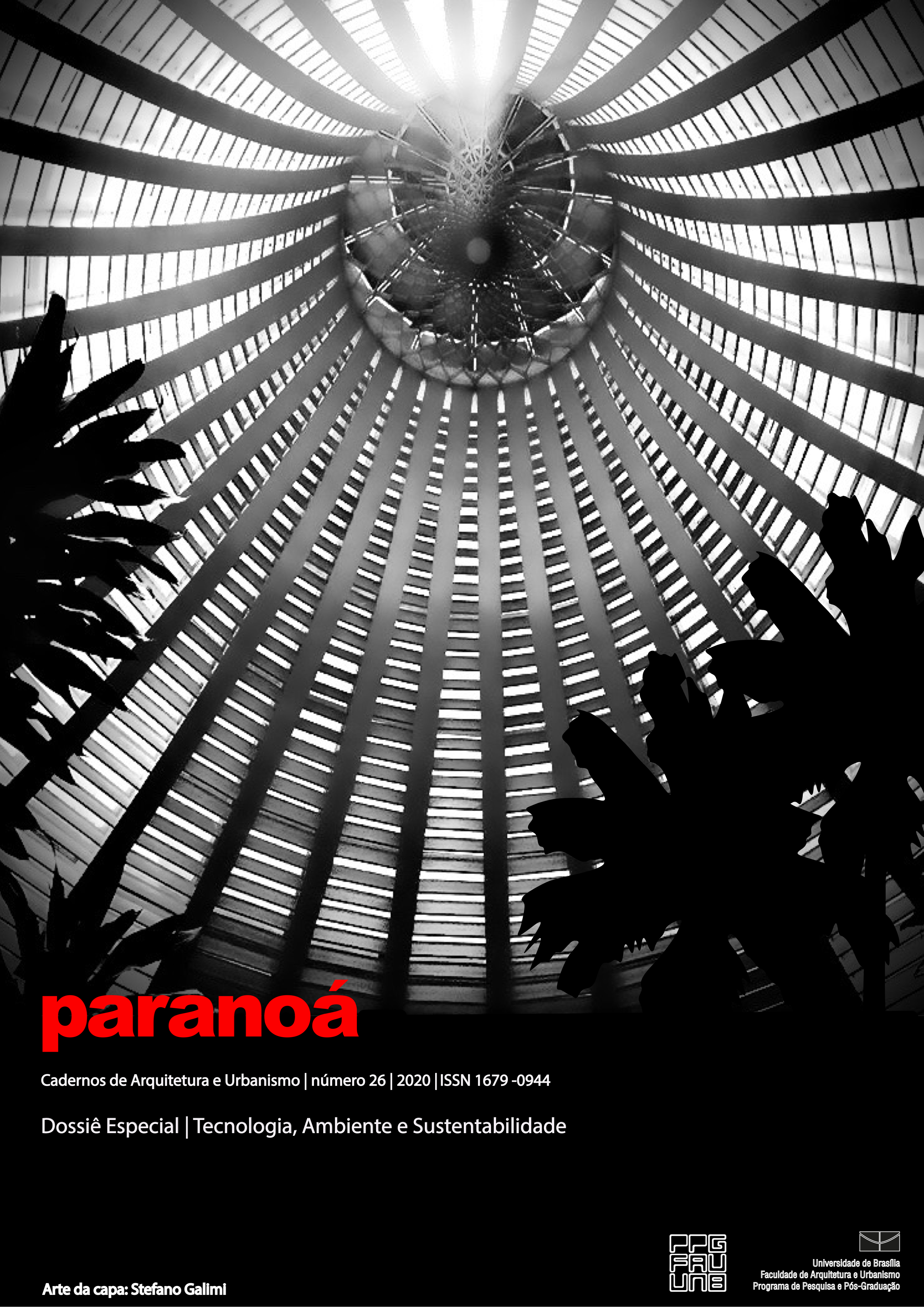Tectonics in rehabilitated buildings in the work of Norman Foster
DOI:
https://doi.org/10.18830/issn.1679-0944.n26.2020.01Keywords:
Tectonics / Norman Foster / Rehabilitation / Patrimony / Contemporary ArchitectureAbstract
Thinking about the contemporary city as a living and dynamic organism that needs answers to current demands is necessary and urgent. Architects, engineers and planners increasingly discuss social, environmental and economic dynamics in an integrated context. The present work presents the tectonic theory, based on an analytical tripod composed by: conception, materiality and technique, in order to be applied as an operational methodology for reading and identifying the design process aimed at the rehabilitation of buildings in the urban context. Initially, it will try to identify how the parameters of the tectonic aspect in architecture, based on the mentioned tripod, can serve as an interpretive basis for interventions in urban buildings, with a focus also on the sustainable technological issues that permeate the discourse in contemporary society. Subsequently, the methodology will be applied in case studies of buildings rehabilitated and requalified in the work of architect Norman Foster. The objective is to find out if the examples answer contemporary urban issues aimed at the defense of heritage, preservation, rehabilitation, and pointing out the concerns of future generations. As a result, the search for the identification of tectonics as a tool of the multidisciplinary project, focusing on the rehabilitation of heritage, in an emerging field that combines and respects the past, present and future.
Downloads
References
BÖTTICHER, Karl Gottlieb Wilhelm. Die Tektonik der Hellenen, Volume 1. Potsdam: Berlag von Ferdinand Riegel, 1852 (Reimpressão do original pela Nabu Public Domain Reprints).
CANTALICE II, Aristóteles de Siqueira Campos. Descomplicando a tectônica: três arquitetos e uma abordagem. 2015. 305 pg. (Pós-graduação em desenvolvimento urbano do Centro de arte e Comunicação) ”“ Universidade Federal de Pernambuco, Recife, 2015.
COLLINS, Peter. Concrete: the vision of a new architecture. London: McGillian books, 1959 [2004].
DEPLAZES, Andrea. Constructing Architecture: Materials, Processes, Structures. Boston: Birkhauser, 2005.
_______. Making Architecture. Zürich: ETH, 2010.
Foster + Partners. Apple Carnegie Library, 2019. Disponível em: https://www.fosterandpartners.com/projects/apple-carnegie-library-washington-dc/. Acesso: Dezembro 2019.
Foster + Partners. Apple Champs Élysées, 2018. Disponível em: https://www.fosterandpartners.com/projects/apple-champs-elysees/. Acesso: Dezembro 2019.
FRAMPTON, Kenneth. Studies in Tectonic Culture. Cambridge, Massachusetts: The MIT Press, 1995.
GREGOTTI, Vittorio. Los materiales de la proyectación. 1966. In Teoria de la Proyectación Arquitectonica. Barcelona: Ed. Gustavo Gili, 1968, p.209-241.
_______. O Exercício do Detalhe. 1983. In NESBITT, Kate (org). Theorizing a new agenda for architecture: an anthology of architectural theory, 1965-1995. Princeton: Princeton Architectural Press, 1996, p.535-538.
MAHFUZ, Edson. Ensaio sobre a Razão Compositiva, uma relação do todo com as partes na arquitetura. Rio Grande do Sul: UFRGS, tese de Doutorado, 1995.
MÜLLER, Karl Otfried. Ancient and its remains; a Manual of the archeology of art. London: A.Fullarton and Co. Newgate Street, 1830 [1850].
SEKLER, Eduard. Structure, Construction, Tectonics (1964). In KEPES, Gyorgy. Structure in Art and in Science. New York: George Brazilier, 1965, p.89-95.
SEMPER, Gottfried. The Four Elements of Architecture (1851). In MALLGRAVE; HERRMANN [org.]. The Four Elements of Architecture and Other Writings. Cambridge: Cambridge University Press, 1989.
Downloads
Published
How to Cite
Issue
Section
License
Copyright (c) 2020 Paranoá: journal of Architecture and Urbanism

This work is licensed under a Creative Commons Attribution 4.0 International License.
Autores que publicam nesta revista concordam com os seguintes termos:
- Autores mantém os direitos autorais e concedem à revista o direito de primeira publicação, com o trabalho simultaneamente licenciado sob a Licença Creative Commons Attribution que permite o compartilhamento do trabalho com reconhecimento da autoria e publicação inicial nesta revista. http://creativecommons.org/licenses/by/4.0
- Autores têm autorização para assumir contratos adicionais separadamente, para distribuição não-exclusiva da versão do trabalho publicada nesta revista (ex.: publicar em repositório institucional ou como capítulo de livro), com reconhecimento de autoria e publicação inicial nesta revista.
- Autores têm permissão e são estimulados a publicar e distribuir seu trabalho online (ex.: em repositórios institucionais ou na sua página pessoal) a qualquer ponto antes ou durante o processo editorial, já que isso pode gerar alterações produtivas, bem como aumentar o impacto e a citação do trabalho publicado (Veja O Efeito do Acesso Livre).















